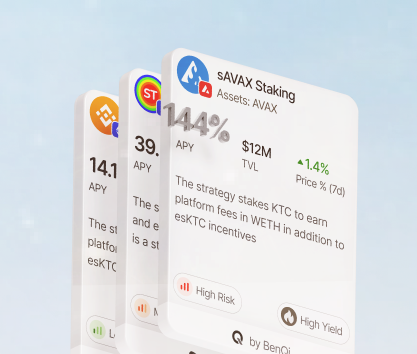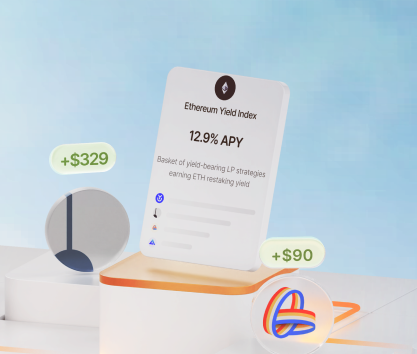The idea of farming yields is a novel concept for many investors. If you have never had any exposure to the crypto industry as a whole and the DeFi sector in particular, it can be a difficult concept to grasp. Why do protocols that pay exorbitant APYs exist? The simplest answer is that competition forces these projects to offer lucrative incentives and increase user activity to generate revenue. Thanks to the high level of composability in DeFi, different protocols and even chains come together to build an environment where all participants can thrive and give generous rewards to their users.
As of October 2024, over 4,600 different protocols are tracked by DeFiLlama and De.Fi. Combined, these protocols offer over 14 thousand pools and at least 20% of them are options with rewards in native, governance, or layer 2 tokens. In some cases, compounded yields reach outrageous numbers and climb up to thousands of percentile points. The variety is facilitated through a myriad of novel instruments. For instance, many investors are using uncollateralized flash loans in farming to increase potential returns while exposing themselves to high risk.
Due to the increasing complexity and diversity of the ecosystem, finding effective capital allocation strategies can be quite difficult. We want to focus on yield farming and its many forms to identify interesting investments that can outperform tradfi. Usually, typical pools confidently beat high-yield bank accounts (close to 5%) and US treasury bonds (roughly 4%) as well as many other options in the fiat economy.
The rise of decentralized finance protocols
A DeFi protocol is a non-custodial, smart-contract platform that offers very specific functionality and operates in a trustless and permissionless mode to ensure that market participants can engage in various financial activities without the need for identification, verification, or dealing with counterparty risk. The absence of overheads in these setups allows these protocols to offer better fee structures compared to tradfi and CeFi alternatives.
For example, thanks to gas fee optimization achieved by layer 2 chains like Optimism or Arbitrum, the price of a single transaction using EVM-compatible assets can be lower than 0.01% compared to incredibly high flat gas fees on the mainnet. Many DEXes have low fees and allow traders to extract higher returns by engaging with other market participants directly. In essence, many protocols use smart contracts to connect to parties and collect a tiny commission for their service.
Since the DeFi sector is very competitive, DEXes are trying their hardest to attract users holding capital. They provide liquidity for market makers and receive rewards from protocols. However, when one of them starts offering higher returns than others, the bulk of investors migrate forcing all platforms to offer higher incentives and fight for liquidity.
DeFi liquidity mining
Multiple platforms are in constant need of liquidity. Contemporary crypto investors have a wide range of options when it comes to parking capital. Below are some examples of protocols that are ready to fight for your coins:
- Decentralized exchanges are numerous and hungry. With over 1,400 of them operating across 90 chains, it is quite hard to have an environment where there is enough liquidity for all of them. Some DEXes like Aerodrome on Base offer incredibly high rewards. The OVN-USD+ pool here offers a generous 254% AERO reward APY.
- Automatic market makers also need liquidity to facilitate trades on DEXes. In many cases, these protocols offer even higher rewards than many exchanges. For example, the DEEP-SUI pool on Cetus AMM on SUI has a 348% base APY and a 302% reward APY paid in SUI with the 30-day mean average in October reaching 1229%.
- Bridges are always looking for sources of liquidity to move assets from one network to another. Many cross-chain yield strategies utilize one of the most popular Ethereum protocols Across that offers a 1.16% base APY on USDC investments and up to 5.95% in ACX rewards on top of that. With the token trading at a price 6.4 times higher than 10 months ago, it seems like a solid investment for early adopters.
Liquidity mining is just one source of yield farming in the DeFi ecosystem. While it is the most reliable and profitable one, there are other interesting options worth exploring.
Cryptocurrency yield optimization
It is necessary to understand how rewards are being distributed and how the increasing supply affects the market. This knowledge will help you plan for exits appropriately and avoid “holding the bag” if the protocol fails to live up to expectations, which happens quite often. Estimating potential profits is a craft that any crypto investor cannot master.
There are several concepts that you need to grasp to make a sound investment plan:
- Learn about risk-adjusted returns. Calculating the necessary premium for taking on risk is difficult in the uncharted territory of the DeFi economy. For example, you can stake ETH for roughly 4% on average which is in line with what US Treasury bonds offer (4.11% in September 2024). However, the volatility of Ethereum must be considered as a risk factor reducing the attractiveness of the 4% APR. So, should you stake? Questions like this one do not have a correct answer.
- Focus on picking good pools. Several metrics are reliable indicators of the longevity, trustworthiness, and potential of any given pool. Total value locked is a good number to look at when looking for a place to park capital. The higher the TVL, the more people and investors believe in the potential of the pool. For instance, Lido with its $26 billion seems too big to fail. At the same time, the USDT pool on NX Finance (Solana) with less than $950K invested and close to 9% APY does not instill confidence.
- Learn about token reward mechanisms. The issuance of native tokens has a profound effect on the price and liquidity. Inflation ultimately catches up with almost all digital assets issued as rewards by DEXes, lending protocols, bridges, and other projects. Even giants like Curve DEX with its CRV token are not exceptions. For example, CRV is trading at $0.26, more than 44 times less than the original $11.5 price. CRV is still a valuable token and rewards can be quite generous but inflation significantly reduced the appeal of this particular reward coin.
Curve DAO is a good example of another important aspect of yield farming: governance token incentives. Some crypto enthusiasts and many engaged community members are very interested in voting and participating in the governance process. With a higher level of participation, the price of tokens remains somewhat stable and the value is not lost as long as the protocol continues existing and encouraging the community to stay active.
Understanding the nuance is critical if you want to create an effective strategy with optimized profitability and controllable risks. Other hugely important factors are regulatory concerns, potential issues with smart contract design, liquidity shortages, and more.
APY calculation in crypto
Knowing the difference between APR and APY is necessary since so many protocols use daily compounding to attract potential investors. These terms mean two slightly different metrics:
- APR stands for annual percentage rate which is a flat interest rate paid by the end of the investment period or in several installments.
- APY is an annual percentage yield which is an interest rate adjusted for compounding in accordance with the number of compounding periods.
You can use a calculator although the formula is relatively simple. To calculate APY, you need to multiply the principal investment by the value of 1 + r/n to the power of n*t, where “n” is the number of compounding periods, “r” is the APR, and “t” is the number of times “r” is applied during the compounding period.
Let’s look at an example:
- A 5% APR on a $10,000 investment in 10 years will produce exactly $5,000 as interest.
- A 5% APY with daily compounding over the same period will produce $17,179.10.
It takes just 7 years to double the initial investment in the second scenario and exactly 10 years in the first. The difference is apparent. When you are looking at potential returns, the APY number is more telling and indicates that investments are compounded. If a pool has an APR value it means that you will be receiving rewards based on the flat percentile value.
How to increase the efficiency of smart contract farming
With the expansion and growth of the DeFi sector, investors received access to a wide selection of tools that can improve the overall portfolio performance. If you are serious about creating a source of passive income out of your DeFi investments, it is necessary to use them.
Below are some examples of interesting protocols that can be helpful when trying to build a solid portfolio:
- Novel DeFi marketplaces like Rivo.xyz. These help you navigate the world of DeFi effectively. This particular platform is a crypto wallet and a place with a variety of unique investment strategies that you can start using with just one click. A good example of a solid investment strategy offered by the protocol is the USDC lending program allowing you to lend stablecoins to leveraged farmers and earn up to 21.3% APY.
- Indexes are good ways for newcomers to get started without feeling intimidated by the variety of investment opportunities in the ecosystem. Just like in the case of stock indexes like the S&P 500, you can invest in the market’s aggregate and expect a more reliable return on investments over a long period. While these are not yield farming protocols, index-focused projects offer solid ROI and reliable payouts, which is a good proposition for any portfolio heavily leaning toward riskier strategies like aggressive yield farming.
- Yield aggregators like Yearn Finance or Beefy Finance, as the name suggests, aggregate yields from a variety of protocols allowing users to focus on managing all investments across the vast DeFi sector in one place. In some cases, aggregators offer better terms than any separate pool. For example, Beefy has a compounding USDC pool with 6.85% base APY which is better than many other offers in the sector. Yearn offers an even more generous option with its USDC pool that has a 6.66% base APY and 6.42% reward APY for a total of 13.08% APY.
The third group of protocols is also known as automated yield harvesters since they automate the investment management process and move assets without active supervision from users. All these tools can be incredibly valuable to investors interested in diversifying and optimizing capital allocation in the DeFi sector.
Risks associated with yield farming
Any investment comes with a certain level of danger. However, you can reduce the effect of risks on your portfolio if you know about them:
- Regulatory concerns. The sector is still unregulated and consumer protection does not exist. Self-custody is great until you lose everything due to a botched transaction or a faulty smart contract. We strongly recommend using insurance if you are not feeling confident navigating the ecosystem.
- Impermanent loss mitigation should be among your top priorities when staking tokens. Locked assets can lose value due to price fluctuations. These losses can turn into permanent if you liquidate the position before the price recovers. Invest in stablecoins and consistently performing coins to reduce this particular risk.
- Liquidity shortages are quite common in the industry and can devastating to prices and trading volumes affecting liquidity pools and utilization. Often, pools underperform in certain market conditions leading to subpar returns or even losses. Make sure to invest in high-TVL pools and protocols.
- Smart contract vulnerabilities. Flash loan attacks, bridge hacks, and many other forms of cyber threats are, unfortunately, still common in the DeFi sector. It means that you should be working with protocols that use externally or publicly audited smart contracts and focus on building a secure architecture.
Other risks include price volatility, overcollateralization, token inflation, and more. It is hugely important to take these into consideration when creating an investment strategy around yield farming protocols.









